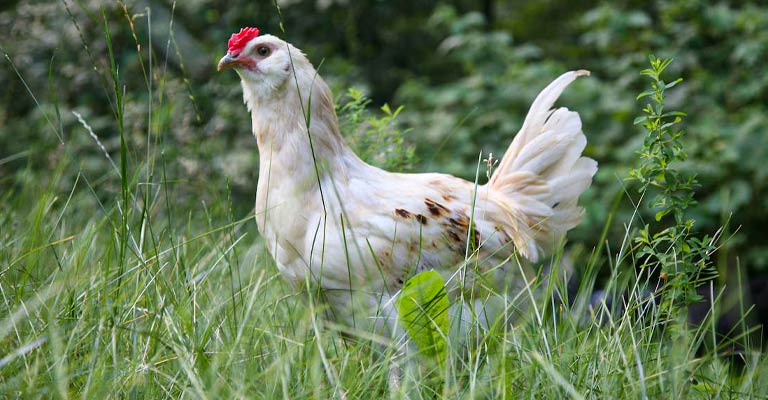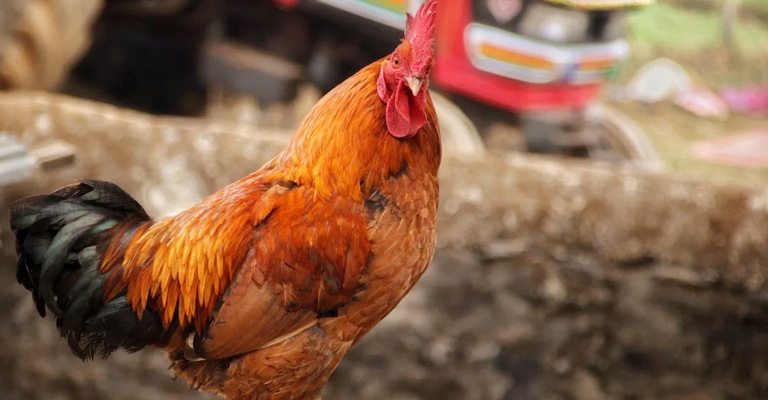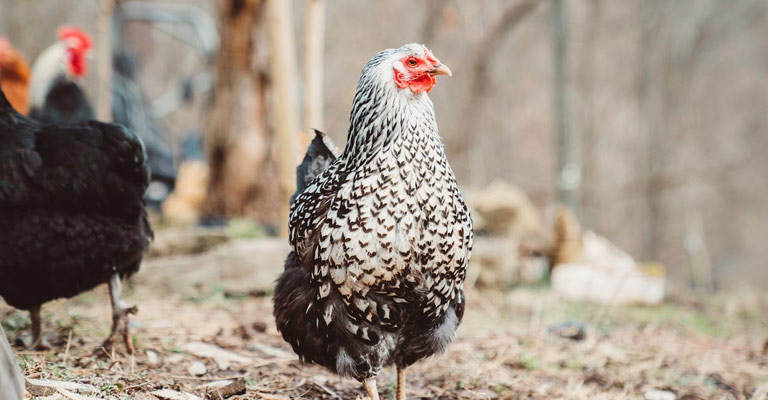The classification of organisms into various taxonomic groups helps us understand the diversity of life on Earth. However, in the animal kingdom, there are occasional conundrums that prompt questions like, “Are chickens mammals or birds?”
Chickens, those familiar denizens of farms and backyards, often find themselves at the center of this perplexity. In this blog post, we embark on a journey to clarify this taxonomic puzzle and explore the fascinating world of avian biology.
Chickens, with their feathered bodies and egg-laying habits, might seem perplexing at first glance. To unravel this mystery, we’ll delve into the defining features of chickens and the distinctions between these two major classes within the animal kingdom. Stay focused.

What Is the Taxonomical Classification, Mammals?
Mammals belong to the class Mammalia, a diverse group of vertebrate animals characterized by several key features. They are part of the animal kingdom (Animalia), the phylum Chordata, and the subphylum Vertebrata. Here’s a brief overview of their taxonomical classification:
Kingdom
Animalia – Mammals are multicellular, heterotrophic organisms.
Phylum
Chordata – Mammals possess a notochord, a dorsal hollow nerve cord, pharyngeal slits, and a post-anal tail at some point in their development.
Subphylum
Vertebrata – Mammals have a vertebral column or backbone.
Class
Mammalia – This is the class to which all mammals belong. Mammals are characterized by having mammary glands that produce milk, hair, or fur covering at some stage in their life, a neocortex region in the brain, and three middle ear bones (the malleus, incus, and stapes).
Within the class Mammalia, there are numerous orders, families, genera, and species, encompassing a vast array of mammals, from tiny rodents to massive whales.
Characteristics of Mammals

Mammals are a class of vertebrate animals known for several distinctive characteristics that set them apart from other animals. These characteristics include:
Mammary Glands
Mammals have specialized mammary glands that produce milk to nourish their young. This is a defining feature of the class Mammalia.
Hair or Fur
Most mammals possess hair or fur on some part of their body, which provides insulation, and protection, and can serve as camouflage.
Endothermy (Warm-Blooded)
Mammals are warm-blooded, meaning they can regulate their body temperature internally, maintaining a relatively constant temperature regardless of external conditions.
Live Birth
The majority of mammals give birth to live offspring rather than laying eggs. However, monotremes (e.g., platypus and echidna) are an exception as they lay eggs.
Diaphragm
Mammals have a muscular diaphragm that separates the chest cavity from the abdominal cavity. This structure aids in respiration by helping to draw air into the lungs.
Four-Chambered Heart
Mammals have a four-chambered heart with two atria and two ventricles, which allows for efficient oxygenation of blood.
Heterodont Dentition
Mammals typically have different types of teeth (incisors, canines, premolars, and molars) that are adapted for various functions, such as cutting, tearing, and grinding food.
Complex Brain
Mammals have relatively large and complex brains compared to other animals. The neocortex, a part of the brain responsible for higher cognitive functions, is especially developed in mammals.
Parental Care
Many mammals exhibit parental care, where parents protect, nurture, and teach their young. This care often involves feeding, teaching essential life skills, and providing shelter.
Three Middle Ear Bones
Mammals have three small bones in the middle ear, known as the ossicles (malleus, incus, and stapes), which amplify and transmit sound vibrations, enabling keen hearing.
Specialized Limbs
Mammals have limbs with various adaptations for different modes of locomotion, such as running, swimming, flying, or digging.
Well-Developed Senses
Most mammals have well-developed senses, including vision, hearing, and olfaction (smell), which are crucial for locating food, avoiding predators, and social interactions.
These characteristics collectively make mammals a highly diverse and successful group of animals, with members inhabiting nearly every corner of the globe and adapting to a wide range of ecological niches.
What Is the Taxonomical Classification, Birds?

Birds belong to the class Aves within the animal kingdom (Animalia). Here is the taxonomical classification of birds:
Kingdom
Animalia – Birds are multicellular, heterotrophic organisms, and they belong to the animal kingdom.
Phylum
Chordata – Birds are chordates, characterized by having a notochord, a dorsal hollow nerve cord, pharyngeal slits, and a post-anal tail at some point in their development.
Subphylum
Vertebrata – Birds have a vertebral column, which places them within the subphylum Vertebrata.
Class
Aves – This is the class to which all birds belong. Birds are distinguished by various characteristics, including feathers, beaks without teeth, lightweight bones, and the ability to lay hard-shelled eggs.
Within the class Aves, there are numerous orders, families, genera, and species, encompassing a wide diversity of bird species, from tiny hummingbirds to large eagles and ostriches.
Bird taxonomy is further classified into various orders based on shared characteristics and evolutionary relationships, allowing scientists to categorize and study the vast array of bird species on Earth.
Characteristics of Birds
Birds are a diverse and fascinating group of animals known for several distinctive characteristics that define them as a class within the animal kingdom. Here are some key characteristics of birds:
Feathers
Birds are the only animals with feathers. Feathers provide insulation, assist in flight, and play a role in courtship displays and camouflage.
Beaks (No Teeth)
Birds have beaks or bills instead of teeth. They use their beaks for various purposes, including capturing and manipulating food.
Bipedal Locomotion
Birds are bipedal, meaning they walk on two legs. Their legs are adapted for various forms of locomotion, such as running, swimming, and perching.
Lightweight Skeleton
Birds have a lightweight skeleton with hollow bones, which reduces overall body weight and aids in flight.
Endothermy (Warm-Blooded)
Birds are warm-blooded, maintaining a constant body temperature regardless of external conditions. This trait supports their high energy needs, especially during flight.
High Metabolic Rate
Birds have a high metabolic rate to sustain their energy-intensive activities, such as flying and foraging.
Hard-Shelled Eggs
Birds lay hard-shelled eggs, which protect the developing embryo and allow for external incubation.
Strong Muscles for Flight
Many birds are adapted for flight, with powerful flight muscles attached to a keel (a ridge on the breastbone).
Excellent Vision
Birds often have exceptional vision, enabling them to detect prey, navigate during flight, and communicate with other birds.
Well-Developed Nervous System
Birds have a well-developed nervous system and complex behaviors. Some species are known for their intricate songs and mating rituals.
Parental Care
Many bird species exhibit parental care, with parents feeding, protecting, and teaching their young.
Respiratory System
Birds have a highly efficient respiratory system, featuring air sacs that allow for a continuous flow of oxygen through the lungs, which aids in the demands of flight.
Unique Vocalizations
Birds produce a wide range of vocalizations, from simple calls to complex songs, often used for communication and territorial defense.
Wide Range of Ecological Niches
Birds occupy a diverse array of habitats, from forests to deserts, oceans to grasslands, and have adapted to exploit various food sources.
Feeding Adaptations
Birds have evolved specialized beaks and feeding strategies, such as beaks for cracking seeds, probing for insects, or catching fish.
These characteristics collectively make birds one of the most successful and diverse groups of vertebrate animals, with over 10,000 species occupying various niches and ecosystems around the world.
Are Chickens Mammals or Birds?
Chickens are birds, not mammals. Chickens belong to the class Aves within the animal kingdom (Animalia) and share all the characteristic features of birds, including feathers, beaks, hard-shelled eggs, and bipedal locomotion.
They are warm-blooded (endothermic) and have a lightweight skeleton with hollow bones. Chickens also exhibit many behaviors and traits typical of birds, such as roosting, scratching the ground for food, and producing distinctive vocalizations.
Chickens are domesticated descendants of wild junglefowl and are one of the most common and recognizable bird species kept for their meat and eggs.
Where Chickens Fit into the Taxonomic Hierarchy?
Chickens, scientifically known as Gallus gallus domesticus, fit into the taxonomic hierarchy as follows:
Kingdom
Animalia – Chickens are multicellular, heterotrophic organisms belonging to the animal kingdom.
Phylum
Chordata – Chickens are chordates, possessing a notochord, a dorsal hollow nerve cord, pharyngeal slits, and a post-anal tail during their development.
Subphylum
Vertebrata – Chickens have a vertebral column, which categorizes them within the subphylum Vertebrata.
Class
Aves – Chickens are a member of the class Aves, making them birds. They share key characteristics with other birds, such as feathers, beaks, and hard-shelled eggs.
Order
Galliformes – Chickens belong to the order Galliformes, which includes other ground-dwelling birds like turkeys, quail, and pheasants. These birds are known for their strong legs and terrestrial habits.
Family
Phasianidae – Chickens are part of the family Phasianidae, which includes various species of pheasants, partridges, and other game birds.
Genus
Gallus – Chickens belong to the genus Gallus, which includes both domestic chickens (Gallus gallus domesticus) and several wild junglefowl species.
Species
Gallus gallus – The specific scientific name for the domestic chicken is Gallus gallus. This species includes various breeds and varieties of domesticated chickens.
Common Misconceptions About the Taxonomy of Chickens
There are a few common misconceptions about the taxonomy of chickens and birds in general. Here are some of them:
Chickens Are Mammals
One common misconception is that chickens are mammals. In reality, chickens are birds, which belong to the class Aves, not mammals, which belong to the class Mammalia.
This confusion may arise because both chickens and mammals are warm-blooded, but they have many fundamental differences.
Chickens Are a Single Species
People often assume that all domesticated chickens belong to a single species. While they share a common species name, Gallus gallus, there are numerous breeds and varieties of chickens with distinct characteristics and traits. These differences are the result of selective breeding by humans.
Chickens Are Descendants of Dinosaurs
While it’s true that birds are descendants of theropod dinosaurs, including animals like Tyrannosaurus rex, the common misconception is that chickens are direct descendants of these fearsome creatures.
Chickens belong to a different branch of the dinosaur family tree and are more closely related to birds like small, feathered dinosaurs such as Archaeopteryx.
All Birds Are the Same
Another misconception is that all birds are the same or very similar. In reality, birds represent an incredibly diverse group with over 10,000 species worldwide, each adapted to specific ecological niches. They vary greatly in size, shape, behavior, and habitat.
Chickens Can Fly Well
Many people believe that chickens are poor flyers or cannot fly at all. While domesticated chickens are not strong fliers, they can fly short distances and often roost in trees or on elevated perches. Wild ancestors of chickens, like the red junglefowl, are more proficient fliers.
FAQs
Chickens are birds. They belong to the class Aves and share characteristics typical of birds, including feathers, beaks, and the ability to lay hard-shelled eggs. They are not mammals, which are a separate class (Mammalia) characterized by traits like mammary glands and hair or fur.
Chickens are not considered mammals because they lack key mammalian characteristics. They do not have mammary glands to produce milk, they lay eggs with hard shells, and they have feathers instead of fur or hair.
These features align them with the class Aves (birds) rather than Mammalia (mammals).
Chickens and mammals are both warm-blooded (endothermic), meaning they can regulate their body temperature internally. However, this shared characteristic is not unique to these two groups and is found in many other animals, including some reptiles and fish.
Chickens are not strong fliers compared to many other bird species. While they are capable of short, low flights, they have been selectively bred for characteristics that make them better suited for terrestrial life, such as producing meat and eggs. Wild ancestors of chickens were more proficient fliers.
The platypus and echidna, both monotremes, are examples of animals that exhibit characteristics of both birds and mammals. They are mammals but lay eggs, much like birds. These unique creatures represent a small group within the mammalian class that retains egg-laying as a primitive trait.
Wrapping Up
Chickens are unequivocally birds, belonging to the class Aves, as defined by their feathered bodies, beaks, and ability to lay hard-shelled eggs.
While their warm-blooded nature might momentarily blur the lines with mammals, it’s essential to remember that these taxonomic categories are based on a range of distinct features and evolutionary history.
The true nature of chickens as birds not only enriches our knowledge of the animal kingdom but also highlights the astounding diversity of life on our planet.
So, the next time you hear the question, you can confidently declare them as members of the fascinating avian realm, a testament to the wonders of biological diversity. Best wishes.